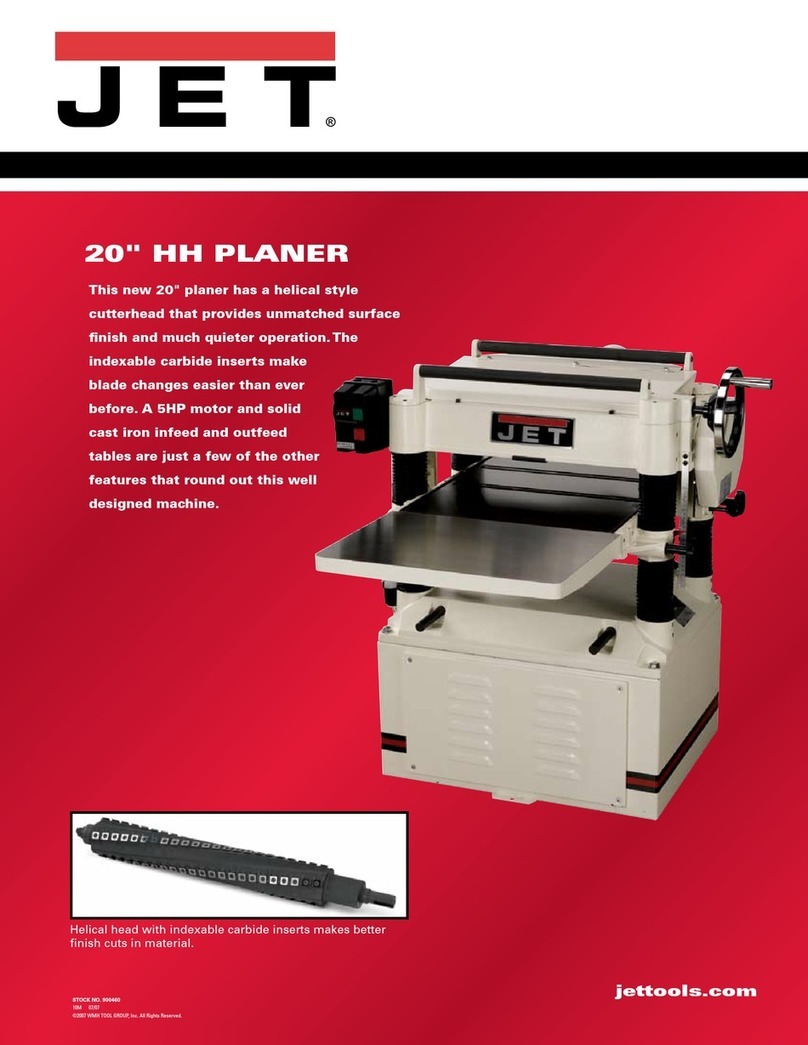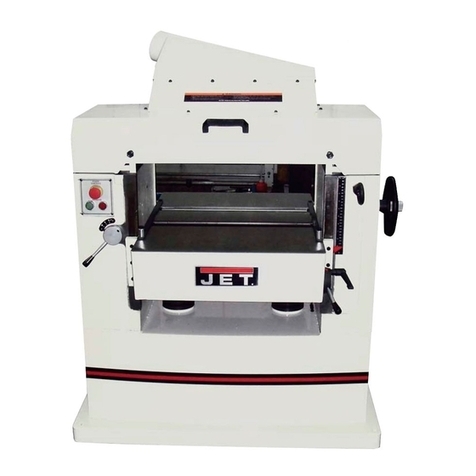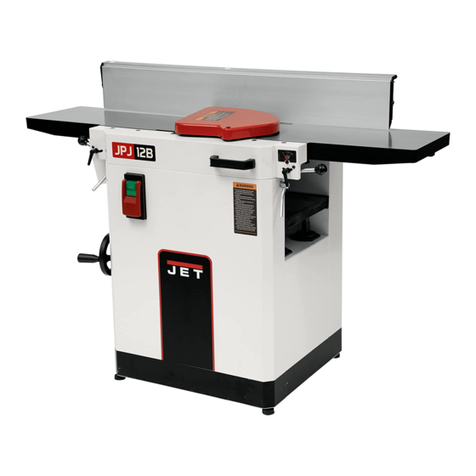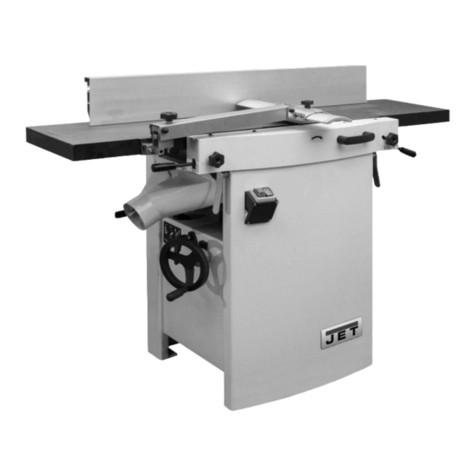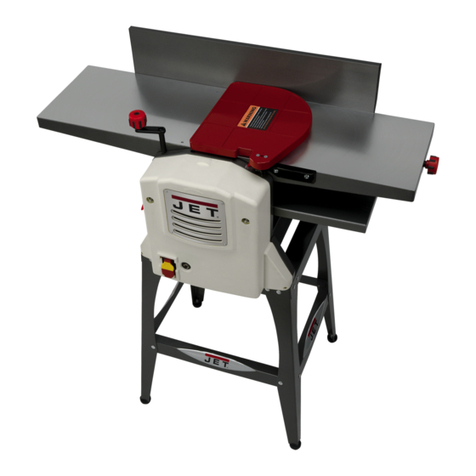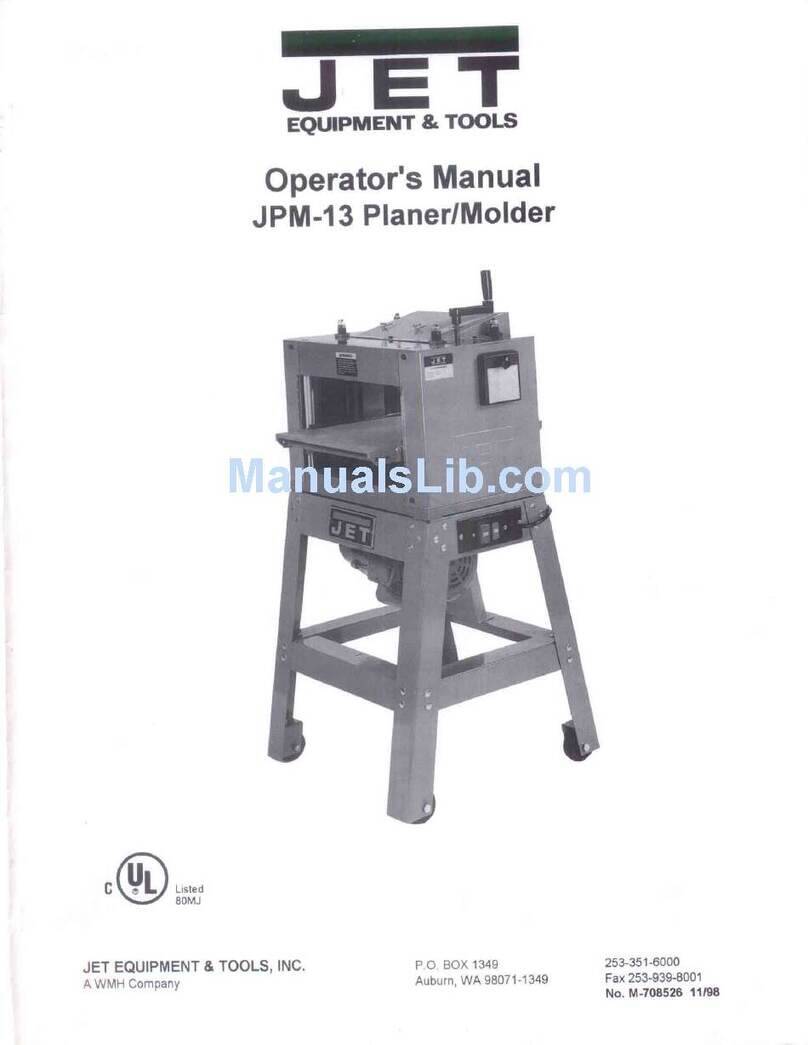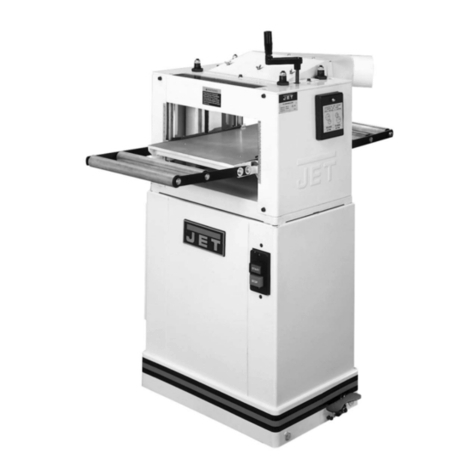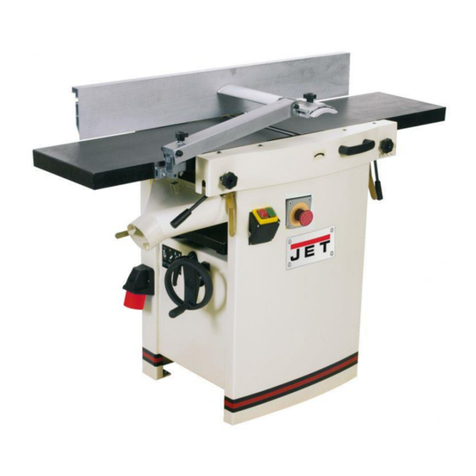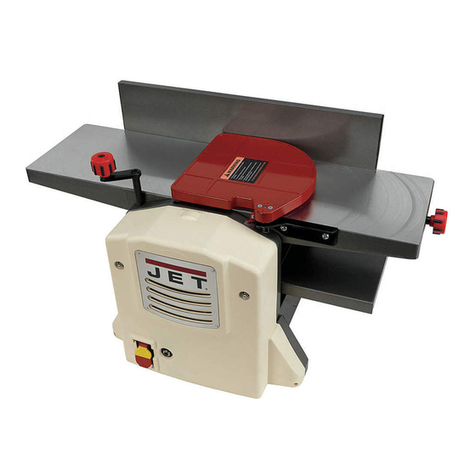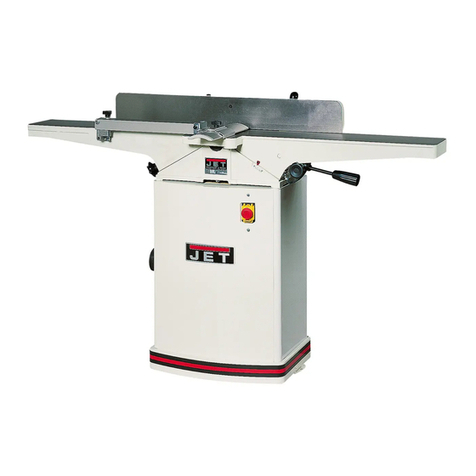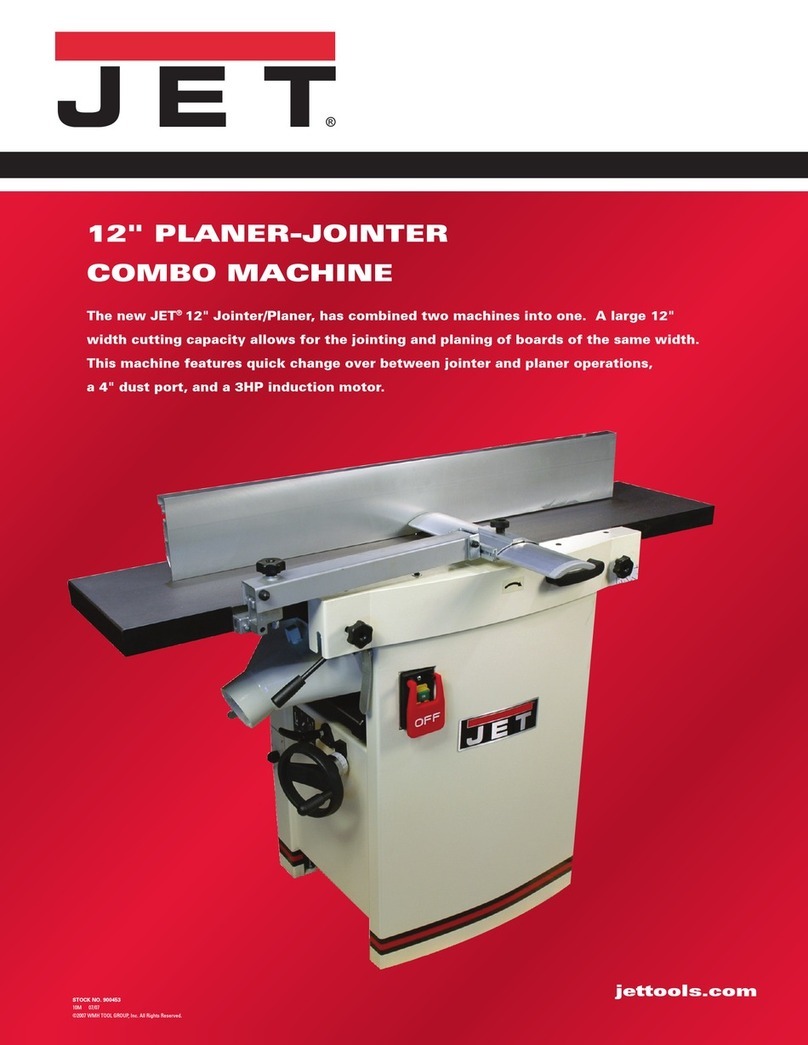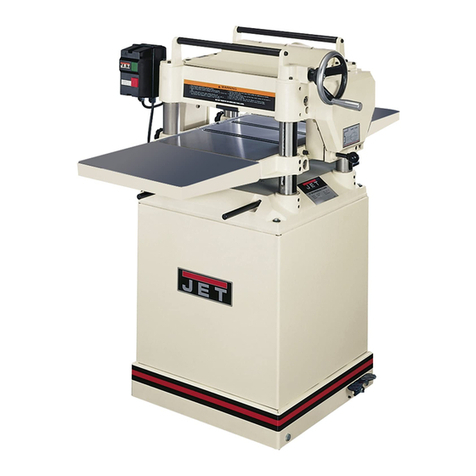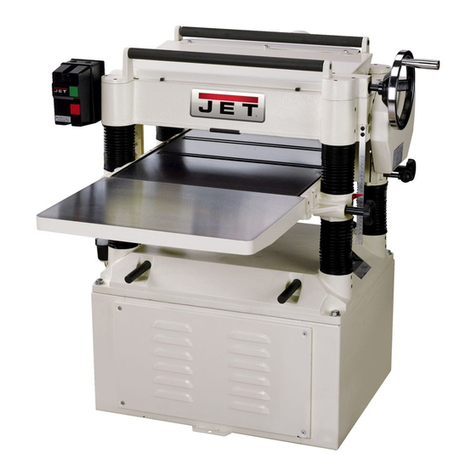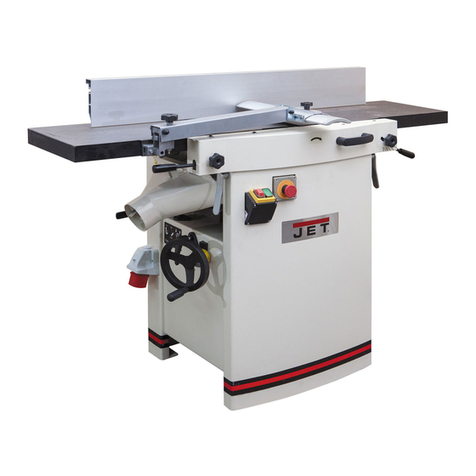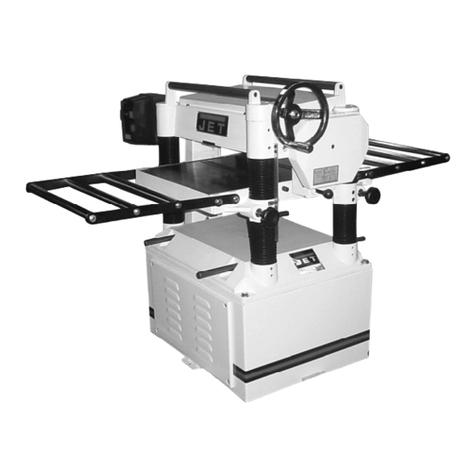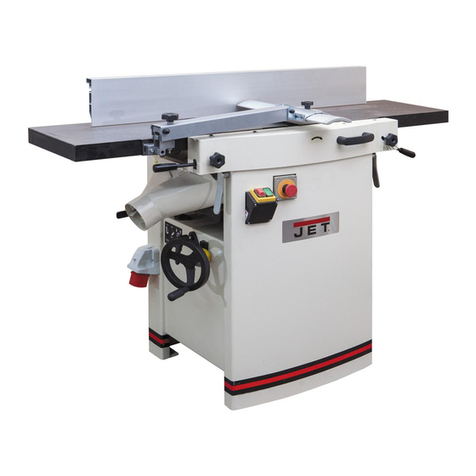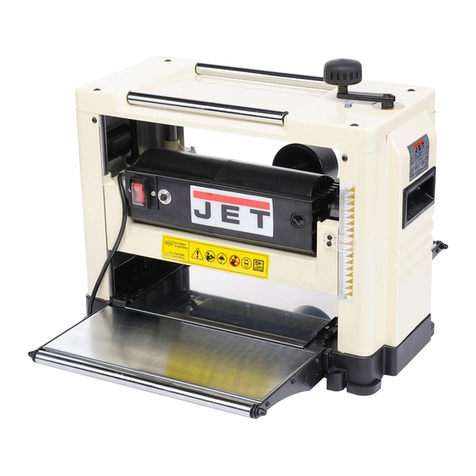
4
Read and understand the entire instruction manual before
attempting assembly or operation.
Keep this operating instruction close by the machine,
protected from dirt and humidity, and pass it over to the new
owner if you part with the tool.
No changes to the machine may be made.
Daily inspect the function and existence of the safety
appliances before you start the machine.
Do not attempt operation in this case, protect the machine
by unplugging the mains cord.
Remove all loose clothing and confine long hair.
Before operating the machine, remove tie, rings, watches,
other jewellery, and roll up sleeves above the elbows.
Wear safety shoes; never wear leisure shoes or sandals.
Always wear the approved working outfit
- safety goggles
- ear protection
- dust protection
Do not wear gloves while operating this machine.
Control the stopping time of the machine, it may not be
longer than 10 seconds.
Remove cut and jammed workpieces only when motor is
turned off and the machine is at a complete standstill.
Install the machine so that there is sufficient space for safe
operation and workpiece handling.
Keep work area well lighted.
The machine is designed to operate in closed rooms and
must be placed stable on firm and levelled ground.
Make sure that the power cable does not impede work and
cause people to trip.
Keep the floor around the machine clean and free of scrap
material, oil and grease.
Stay alert!
Give your work undivided attention. Use common sense.
Keep an ergonomic body position.
Maintain a balanced stance at all times.
Pull the mains plug if the tool is not in use.
Pull the mains plug prior to any maintenance or change of
cutting knives.
Before starting the machine make sure that operating and
measuring tools are removed from the machine.
Do not operate the machine when you are tired.
Do not operate the machine under the influence of drugs,
alcohol or any medication. Be aware that medication can
change your behaviour.
Never reach into the machine while it is operating or running
down.
Never leave a running machine unattended. Before you
leave the workplace switch off the machine.
Keep children and visitors a safe distance from the work
area.
Do not operate the electric tool near inflammable liquids or
gases. Observe the fire fighting and fire alert options, for
example the fire extinguisher operation and place.
Do not use the machine in a dump environment and do not
expose it to rain.
Wood dust is explosive and can also represent a risk to
health. Dust form some tropical woods in particular, and
from hardwoods like beach and oak, is classified as a
carcinogenic substance.
Always use a suitable dust extraction device
Before machining, remove any nails and other foreign
bodies from the workpiece.
Never operate with the guards not in place – serious risk of
injury!
The jointer fence always has to be mounted.
Always keep your hands well clear of the cutter block.
When jointing, use the jointer fence to provide firm support
for the work piece.
Use an auxiliary fence when planing thin or narrow stock, to
keep your hands at a safe distance from the cutter block.
Always cover the part of the cutter block that is not covered
by the work piece with the cutter block guard.
Adjust the cutter block guard exactly to the dimension of the
work piece.
Never reach with your hands under the cutter block guard
when guiding the work piece!
Plane only stock which rests securely on the table.
Work pieces shorter than 200mm require special feeding
aids for planing (e.g. feeding template).
Never plane a work piece if it cannot be guided with a
sufficient distance to the cutter block.
Do not pull the work piece back over the unguarded cutter
block.
Specifications regarding the maximum or minimum size of
the work piece must be observed.
Do not remove chips and work piece parts until the machine
is at a complete standstill.
Always plane the work piece over its entire length.
Always use sharp cutter knives.
Use roller supports on both sides of the planer when working
long stock.






